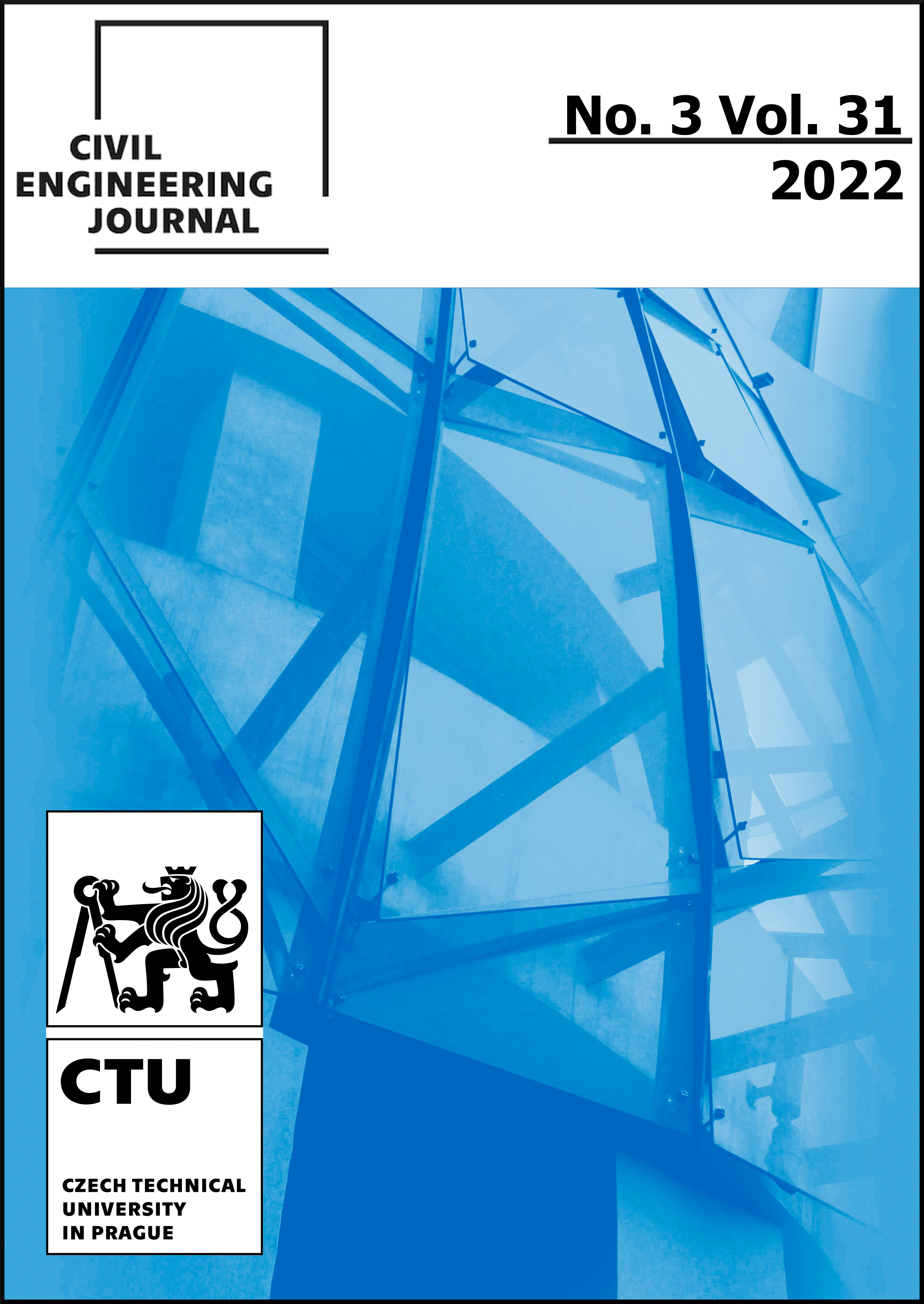The THE COMPARATIVE STUDY OF THE PERFORMANCE OF CONCRETE MADE FROM RECYCLED SAND
DOI:
https://doi.org/10.14311/CEJ.2022.03.0031Keywords:
Sand, Marble, Tiling, Cinder block, Waste, Performance, Concrete., Sand, Marble, Tiling, Cinder block, Waste, Performance, ConcreteAbstract
The main objective of this study of research is to initiate and develop a comparative study of fresh and hardened properties of concretes made from recycled sand from three types of waste: marble waste, tiling waste and cinder block waste. And this, in the intention of contributing to the world effort relating to the preserve of natural aggregate resources and limit landfill to the ultimate waste thresholds.
To do this, in the composition of a current concrete with a water / cement ratio equal to 0.55, an equivalent volume of sand from the three wastes respectively replaced a volume of 15% of the ordinary sand. The properties in the fresh state: workability, air content and density and in the hardened state: compressive strength, Flexural tensile strength, compressive strength determined with non-destructive tests, water absorption by immersion, absorption by capillarity and chloride penetration of the various concretes produced are analyzed, and compared to those of the control concrete.
The results obtained show that the concretes containing the waste sands have acceptable characteristics. However, tiling waste sand performs better than the other two recycled sands.
Downloads
References
Nadjoua B., 2017. Granulats recycles de substitution pour bétons hydrauliques : béton de démolition - déchets de briques - déchets de verre. PhD Thesis, University of Constantine, Algeria.
Lilia B., Dyhia B., 2017. Recyclage des déchets inertes de marbre et de granite de la marbrerie YAHIAOUI-DBK dans la fabrication des dallages de sol. Master Thesis, University of Mouloud Mammeri Tizi-Ouzou, Algeria.
Hamza C., Zahir T., 2017. Amélioration des propriétés mécaniques du plâtre de construction avec des déchets plastiques et verre," Master Thesis, University Akli Mohand Oulhadj, Bouira, Algeria.
Hebhoub H., Belachia M., 2011. Introduction de sable de déchet de marbre dans le béton hydraulique. Nature et Technologie, p. 6,
Tugrul Tunc E., 2019. Recycling of marble waste: A review based on strength of concrete containing marble waste," Journal of Environmental Management, vol. 231, pp. 86-97. https://doi.org/10.1016/j.jenvman.2018.10.034
Omar O. M., Abd Elhameed G. D., Sherif M. A., Mohamadien H. A., 2012. Influence of limestone waste as partial replacement material for sand and marble powder in concrete properties. Housing and Building National Research Center Journal, vol. 8, pp. 193-203. http://dx.doi.org/10.1016/j.hbrcj.2012.10.005
Kore S., Vyas A., 2015. Behavior of Concrete Using Marble Waste as Coarse Aggregate. UKIERI Concrete Congress –Concrete Research Driving Profit And Sustainability. India.
Chaid R., Jauberthie R., Abadlia M. T., Talah A., 2011. Effet des déchets de marbre sur la durabilité des bétons en milieu marin. The XXIXe Rencontres Universitaires de Génie Civil. Tlemcen, Algeria.
Djebien R., Hebhoub H., Belachia M., Berdoudi S., Kherraf L., 2018. Incorporation of marble waste as sand in formulation of self-compacting concrete. Structural engineering and mechanics: An international journal, vol. 67, pp. 87-91. DOI: https://doi.org/10.12989/sem.2018.67.1.087
Benhalilou M. I., Belachia M., Houari H., Abdelouahed A., 2020. The Study of the Characteristics of Sand Concrete Based on Marble Waste Sand. Civil And Environmental Engineering Reports, vol. 30, No.1, pp 130-144. DOI: 10.2478/ceer-2020-0010.
Hebhoub H., Kherraf L., Abdelouahed A., Belachia M., 2020. Introduction of Marble Waste Sand in the Composition of Mortar. In book: Use of Sandy Materials in Civil Engineering, Publisher: Intechopen. DOI: 10.5772/intechopen.91254
Tennich M., Ben Ouezdou M., Kallel A., 2013. Béton autoplaçant à base de déchets de marbres et de carrelage. The Journées nationales de béton : JNB’13. Tunisia.
Djebien R., Belachia M., Hebhoub H., 2015. Effect of marble waste fines on rheological and hardened properties of sand concrete. Structural Engineering and Mechanics, vol. 53, pp. 1241-1251. DOI: 10.12989/sem.2015.53.6.1241.
Hebhoub H., Aoun H., Belachia M., Houari H., Ghorbel E., 2011. Use of waste marble aggregates in concrete. Construction and Building Materials, vol. 25, pp. 1167-1171. https://doi.org/10.1016/j.conbuildmat.2010.09.037.
Sancheti G., Bhargava S., Jain K., 2020. Mechanical and Durability Performance of Concrete Made with Waste Marble and Fly Ash. Jordan Journal of Civil Engineering, vol. 14, pp. 305-318.
De Larrard F., Tondat P., 1993. Sur la contribution de la topologie du squelette granulaire à la résistance en compression du béton. Materials and Structures, vol. 26, pp. 505-516.
Belkadi A. A., 2018. Contribution à l'étude de la durabilité et les performances des bétons autoplaçants (fibres végétales, milieu agressif, formulation, modélisation). PHD thesis, Mohamed Khider university – Biskra- Algeria.
Downloads
Published
Issue
Section
License
Copyright (c) 2022 Author

This work is licensed under a Creative Commons Attribution-NonCommercial 4.0 International License.
Authors who publish with this journal agree to the following terms:
- Authors retain copyright and grant the journal right of first publication with the work simultaneously licensed under a Creative Commons Attribution License that allows others to share the work with an acknowledgement of the work's authorship and initial publication in this journal.
- Authors are able to enter into separate, additional contractual arrangements for the non-exclusive distribution of the journal's published version of the work (e.g., post it to an institutional repository or publish it in a book), with an acknowledgement of its initial publication in this journal.
- Authors are permitted and encouraged to post their work online (e.g., in institutional repositories or on their website) prior to and during the submission process, as it can lead to productive exchanges, as well as earlier and greater citation of published work (See The Effect of Open Access).
How to Cite
Accepted 2022-10-10
Published 2022-10-30











